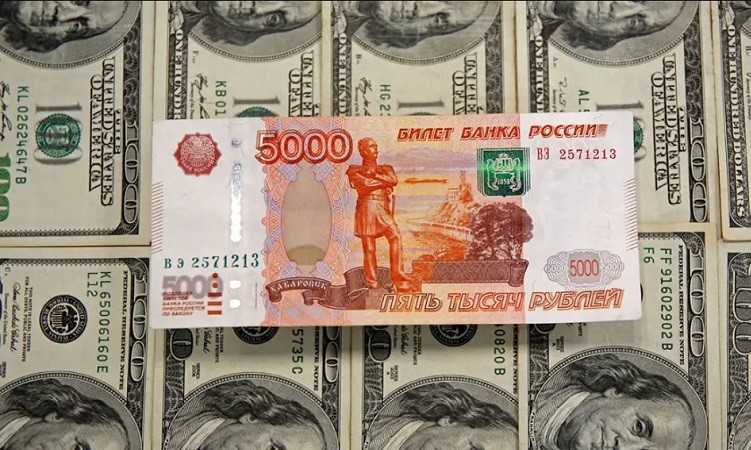
The Russian rouble rose more than 7% versus the dollar on Friday, reaching levels last seen in March 2018, bolstered by capital controls and domestic tax payments, which typically drive currency demand.
Despite a full-fledged economic crisis, the rouble has gained about 30% this year, making it the best-performing currency. The rouble was trading at 58.90 against the dollar at 0807 GMT on the Moscow Exchange, following hitting 57.0750, its lowest level since late March 2018.
The rouble strengthened by more than 5% against the euro, reaching 60.86 after reaching 59.02, its best level since June 2015. After Western sanctions froze about half of Russia's gold and FX reserves, export-oriented enterprises are forced to convert their foreign currency receipts, driving the rouble higher.
The rouble remained substantially weaker outside of the Moscow Exchange. Sberbank, Russia's largest lender, was offering 67.17 roubles for US dollars and 69.84 roubles for euros. The higher rouble slows inflation and benefits importers, but it harms exporters who sell products and services abroad for foreign currency, resulting in lower revenues for Russia's export-dependent government.
According to analysts, Russian authorities are not interested in a significant rouble strengthening from present levels, and the currency is expected to drop before the end of the year. The central bank permitted banks to sell foreign money to residents without limits starting May 20, with the exception of US dollars and euros, indicating that authorities are ready to progressively ease capital controls.
Pakistani rupee under pressure breaching 200-mark due to economic, political crises
UN Warnings: Ukraine invasion could cause global food crisis
UK's inflation rate reaches a 40-year high as energy bill soars